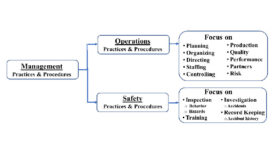Home » Keywords: » safety leadership
Items Tagged with 'safety leadership'
ARTICLES
Leading Safety
Unintentional biases based on personal experience may affect the workplace
Attribution — a hidden risk factor
February 7, 2023
Leading Safety
Separating safety management from operations isn’t always beneficial
Issues occur within safety oversight
December 13, 2022
Leading Safety
Focus on employees’ needs for a more productive approach to workplace engagement
October 18, 2022
Thought Leadership
Are we our own worst enemy? Optimize safety leadership skills though peer feedback
July 15, 2021
IMAGE GALLERIES
ASSE Safety 2014 Review
A gallery of photos from the sprawling Orange County Convention Center in Orlando, where ASSE’s annual professional development conference was held June 8-11. All photos courtesy of the American Society of Safety Engineers.Date: July 30, 2014
Get our new eMagazine delivered to your inbox every month.
Stay in the know on the latest safety trends.
SUBSCRIBE TODAYCopyright ©2024. All Rights Reserved BNP Media.
Design, CMS, Hosting & Web Development :: ePublishing











